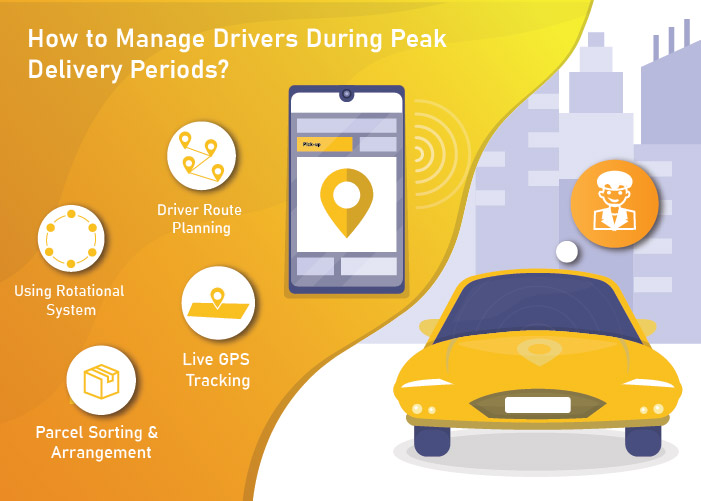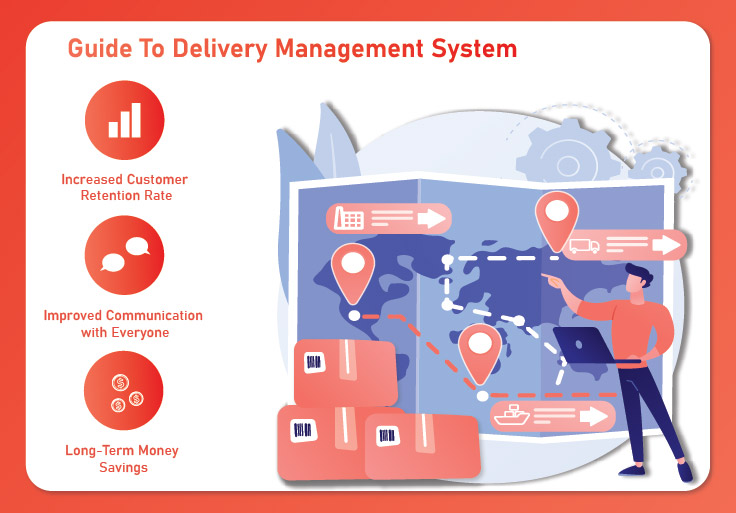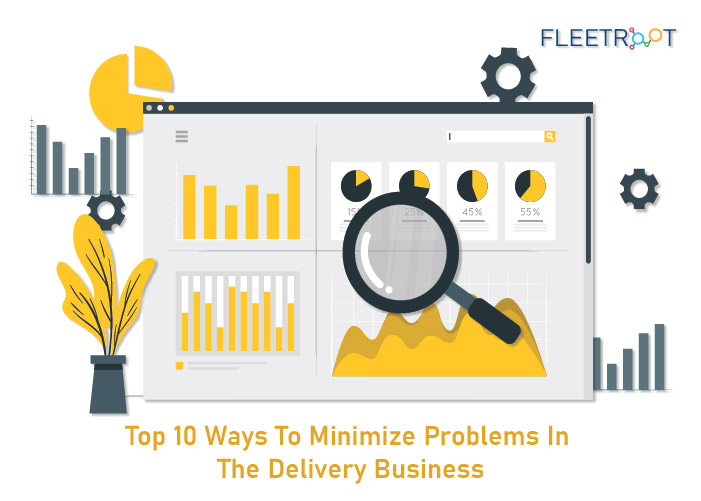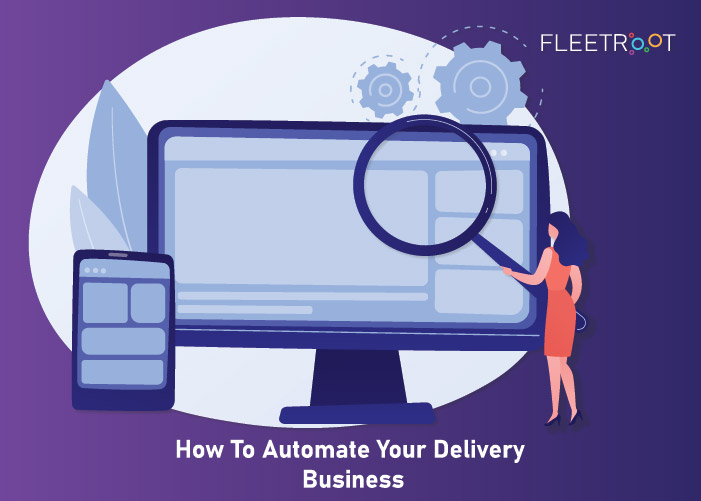For logistics and e-commerce companies, the demand for last mile deliveries reach an all-time high during peak periods like festivals or the beginning of the new year, or even during pandemic-induced lockdowns.
This increase in demand calls for effective management of drivers and delivery workforce to handle seasonal spikes.
Let us understand how an integrated driver management software can help you to manage drivers during peak delivery periods and ensure timely deliveries.
1.Demand Forecasting for Deliveries:
Forecasting demand during peak periods is a powerful way of maintaining an optimal capacity of your delivery service with an adequate number of drivers.
Estimating probable demand in peak periods based on past data and current cycles helps you to plan for them in advance and actively take measures to ensure the availability of drivers to meet all orders during those periods.
2.Matching Order Volume with Driver Availability:
Efficient order management during peak periods helps to manage drivers more effectively. You can gain more control over your own delivery fleet by matching orders with the best available drivers.
During peak seasons, companies find it hard to manage the sudden surge in orders. So, the challenge that arises is whether you need to hire additional drivers for your fleet.
By knowing how many drivers are available to handle the peak delivery orders, you can clearly identify the need for tapping into third-party drivers without having to purchase any new vehicles or hire additional staff.
3.Hiring Additional Resources:
During peak seasons, logistics and e-commerce companies may require to bring in additional resources to manage the increased order volumes amidst driver shortages.
The shortage of qualified drivers forces shippers to take new approaches and creatively modify their operations. With the new driver recruits and a flexible deployment model, you can ensure that you have adequate capacity to provide reliable delivery service to your customers during the peak season.
You also have the option of extending delivery service capacity by contracting an outsourced delivery partner to handle overflow during the peak delivery periods.
4.Repurpose Flex Staff During Peak Period:
Shippers facing challenges with maintaining sufficient capacity during peak delivery periods can repurpose flex staff (such as kitchen staff) as delivery drivers.
The Driver Management tool allows flex staff (who occasionally deliver during peak times) the ability to easily time-clock and punch-in as drivers. This ability makes it easy for the management to keep track of which flex staff worked in what roles and when and ensure proper compensation accordingly.
5.Using Rotational System:
The rotational system helps drivers to retain a driver position as well as have the flexibility to be deployed elsewhere during non-peak times. Rather than being continuously on the road, drivers can take on warehouse-based responsibilities during quieter periods and get deployed as drivers during peak periods.
6.Streamlined and Efficient Scheduling:
Proper scheduling is at the core of delivery management and driver collaboration. Dispatchers need to accurately know which drivers and driver types are available at any given time, including in-house drivers and third-party drivers.
The Driver Management module enables drivers to know what work shifts are available to them, easily select their desired work shifts as per their availability, and secure their upcoming work shifts.
By equipping drivers with an integrated tool to manage their delivery shifts and give them a clear understanding of when they’re needed, you improve your fleet’s driver attendance, performance, and retention.
7.Driver Route Planning:
Route planning helps to manage driver time better. Using the smart and dependable route planning feature, you can plan and assign tasks to drivers and ensure they are taking the right routes.
This planning helps to ensure timely last-mile deliveries during peak periods.
With the real-time tool, dispatchers can also make changes and adjustments to routes quickly, on the fly, and with greater control and flexibility. They can swap routes between vehicles, move delivery orders around with the drag-and-drop feature, or re-optimize delivery schedules easily to optimize deliveries during peak times as per driver availability.
8.Parcel Sorting & Arrangement:
When fleet drivers load the goods, they have to arrange the parcels based on the optimized route. The parcel sorting and arrangement helps drivers to quickly locate them in the delivery van or truck, and minimize time spent at each stop.
9.Using IT Tools to Manage External Resources:
During peak periods, logistics companies may bring in some additional resources, but these resources have limited knowledge of business processes and know-how. By using mobile IT tools, you can guide the new staff through various tasks, preventing them from making critical mistakes.
For example, delivery stoppages are presented to new fleet drivers in optimized order through the automated system. For each stop, drivers receive clear instructions on what to do. The system also helps drivers handle any problems that arise during last-mile deliveries.
10.Matching Schedules with Driver Special Skills:
The Driver Management tool helps shippers to get a clear understanding of drivers’ special skills and capabilities, such as additional spoken languages, certifications, and licenses, which may be useful to make specific deliveries at any given time.
With this information, shippers can create schedules that fulfill special delivery needs.
11.Leveraging Your Drivers’ Inputs:
Apart from using your own knowledge, it is also a good idea to check with your drivers and use their insight as well for managing deliveries better during the peak season.
You can improve your future route plans by getting feedback from your drivers on:
traffic bottlenecks and peak hours
customers who tend to disrupt delivery schedules and need more time added per stop
start/end location requests so that you can add such areas to the plan
assigning areas to specific drivers based on their familiarity with certain neighborhoods and the ability to get around swiftly.
12.Live GPS Tracking:
You can keep a watch on drivers, track their movements, and view their real-time location using a live GPS tracking tool. You can maintain complete visibility on driver updates from the road, including live ETAs, order completion, proof of delivery, and more.
13.Considering Potential Sickness or Holiday:
While planning driver allocation for the peak season, take potential sickness or holiday cover into consideration.
In case of any doubt, overbook drivers because it is always easier to cancel a driver than depriving a delivery vehicle to move out of the distribution center due to the unavailability of a driver.
14.Compensation & Additional Benefits:
Shippers should ensure that the drivers are paid compensation correctly and on time. Otherwise, disgruntled drivers quickly move on if they are unhappy who receive lesser compensation.
Apart from regular wages, shippers should consider offering bonus payments to drivers to retain them during peak periods.
Drivers may also desire additional benefits, such as a decent vehicle, family-friendly start times, and other motivational benefits.
15.Advanced Analytics & Reporting:
Advanced analytical tool connected to delivery management software helps to track, record, and analyze information associated with your delivery service.
These tools help to monitor key metrics in delivery logistics, such as time-clock and punch-ins for drivers, distances driven, orders completed, deliveries per hour, and more.
Streamlined driver reporting tool helps to measure driver tasks and performance, both qualitative and quantitative, for driver payments, ratings, and internal optimization.
Conclusion:
For logistics and e-commerce companies, managing drivers properly is one of the major steps in making the entire delivery management ecosystem more responsive and sustainable during peak delivery periods.
With the right use of technology, increased operational capabilities, and efficient management of drivers, you can smartly manage peak delivery periods.
An efficient Driver Management software automates and optimizes every element in the delivery ecosystem – right from driver scheduling to performance metrics and driver compensation.
So, are you ready to implement a unified last-mile delivery optimization and driver management software to manage drivers during peak delivery periods?




